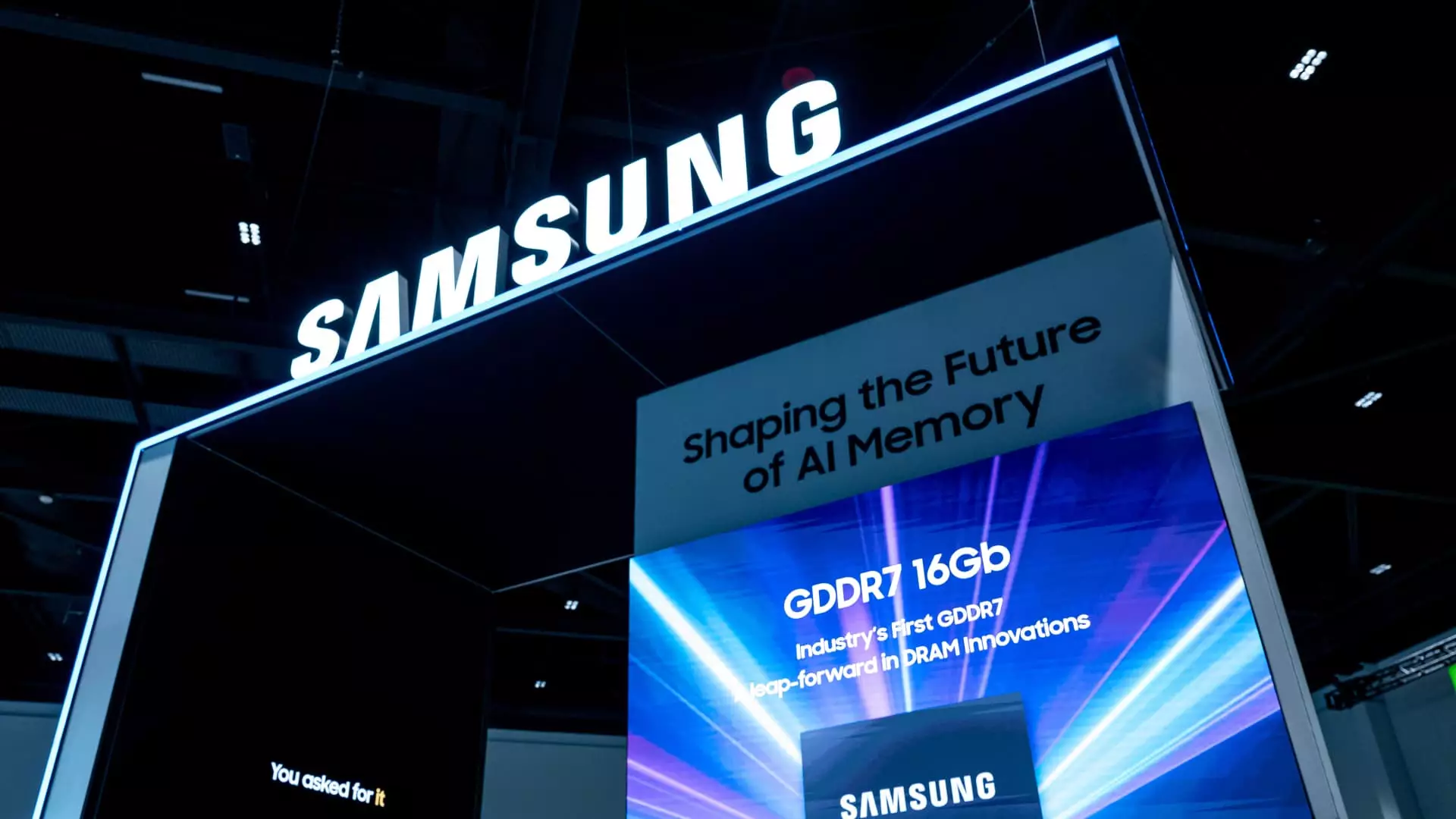Samsung Electronics, once a titan of technological innovation, now grapples with a sobering forecast that underscores the fragility of its current business model. Projecting a staggering 56% decline in operating profit for Q2, the South Korean giant signals an urgent need for introspection and strategic recalibration. The anticipated earnings of approximately 4.6 trillion Korean won starkly contrast with last year’s 10.44 trillion, reflecting erosion in core areas such as memory chips and smartphones. This downturn isn’t merely a fleeting setback but an indication of mounting structural challenges that threaten to undermine Samsung’s market dominance. The discrepancy between Samsung’s internal forecasts and analyst estimates underscores a troubling disconnect—highlighting how management’s outlook has arguably become overly optimistic in the face of mounting headwinds.
What makes Samsung’s predicament particularly perilous is the confluence of external pressures—be it U.S. export restrictions targeting AI chips destined for China—that actively inhibit growth. The company’s own acknowledgment of inventory adjustments point to over-optimistic supply planning, which has now turned into a significant drag. When a company that once set industry standards faces such a steep decline, it calls into question whether its leadership has adequately adapted to the rapidly evolving technological landscape.
Competitive Displacement and Technological Lag
The semiconductor industry, historically driven by innovation and fierce competition, is now witnessing a consolidation of power among a handful of players. Samsung’s struggles to keep pace with rivals like SK Hynix and Micron reveal that dominance in memory chips is increasingly fragile. As Nvidia leads the AI chip revolution with superior high-bandwidth memory (HBM) offerings, Samsung finds itself lagging behind. Reports suggest that Samsung’s latest HBM chips are still in certification limbo, pushing potential revenue streams into the distant future. Given Nvidia’s commanding 70% market share in HBM demand, Samsung’s delayed qualification process is not just a minor setback—it’s a critical bottleneck that stifles the company’s ability to capitalize on the booming AI market.
Furthermore, Samsung’s efforts to align its HBM products with Nvidia’s standards seem sluggish compared to the agility shown by competitors. Such delays not only impede immediate sales but also risk long-term market share erosion. The company’s reliance on AMD for some AI chip supplies introduces a fleeting opportunity, but real impact on profits is still distant, making the near-term outlook bleak. It appears that Samsung’s innovation cycle is not only lagging but possibly suffering from internal bottlenecks, perhaps rooted in organizational inertia or cautious risk-taking, which is ill-suited in the hyper-competitive environment of cutting-edge semiconductors.
Operational Challenges and Strategic Missteps
The ongoing struggles of Samsung’s foundry business serve as a stark reminder of how internal operational efficiencies are critical in today’s tech ecosystem. Despite being a powerhouse, Samsung’s foundry has faced declining orders and stiff competition from TSMC, which continues to dominate the industry with more advanced manufacturing processes. The report of scaling back 30% of staff in some divisions hints at internal distress—an instinctive response to a shrinking order book rather than a confident strategic shift.
These layoffs suggest that Samsung is perhaps trying to shed excess capacity or streamline operations, but they also reveal deeper issues in innovation pipeline management and market positioning. The company’s dominance in consumer electronics and memory chips is under assault; remaining complacent or slow to adapt could have irreversible consequences. The semiconductor industry rewards agility and strategic foresight, qualities that Samsung must embrace with more urgency if it is to avoid slipping further behind.
The company’s leadership seems at a crossroads—whether to double down on existing strengths or pivot aggressively toward emerging opportunities such as AI-specific hardware and next-generation memory architectures. Missing out on the latest Nvidia-qualified HBM chips not only cuts immediate revenue but also signals a potential misalignment with market leaders dictating industry standards. As the global chips landscape shifts, Samsung’s ability—or inability—to innovate swiftly will determine whether it can remain a formidable player.
Samsung’s current trajectory raises a compelling question: will it cling to its legacy or embrace radical transformation? The answer likely hinges on its capacity to expedite innovation, streamline operations, and recalibrate its strategic priorities. Resting on past achievements and complacency in a dynamic market is a perilous gamble. For Samsung, the window to redefine its future is narrowing—only through decisive action, aggressive R&D investment, and a clear vision for the semiconductor revolution can it hope to reclaim its former glory. The industry is no longer waiting for legacy players to catch up; it demands trailblazers willing to take bold risks and lead the charge into the next era of technological dominance.

